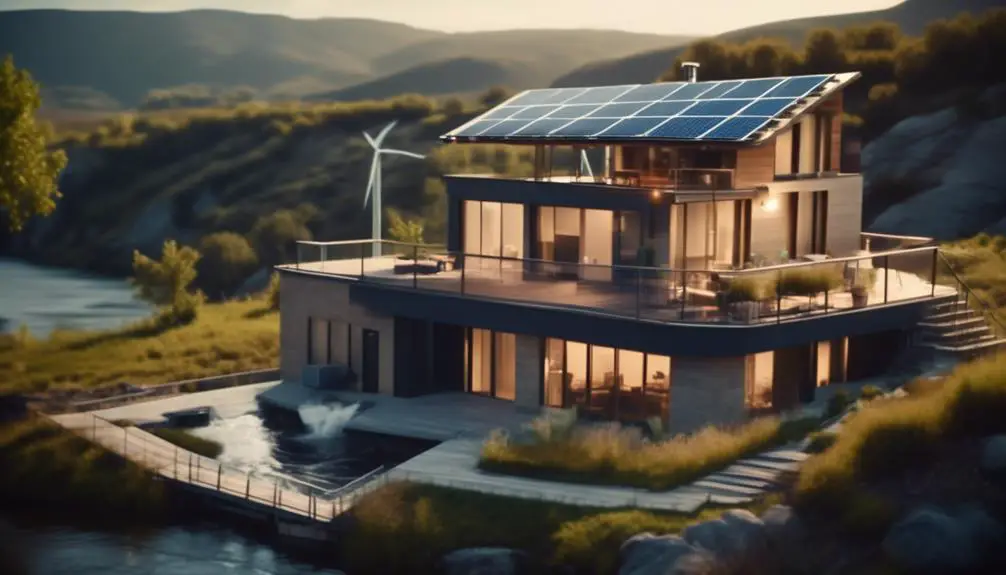With energy costs skyrocketing globally, homeowners are searching for sustainable and cost-effective solutions to power their homes. Solar energy offers a compelling alternative, reducing electricity bills by up to 70% while contributing to environmental conservation. This article explores how affordable solar panel systems can transform homes, save money, and empower individuals to embrace green energy.
Whether you’re in the USA, UK, Canada, or regions like Nigeria, solar energy presents a viable path to energy independence and long-term savings. Let’s dive into how you can take advantage of this transformative technology.
1. What Makes Solar Energy Affordable Today?
The Evolution of Solar Costs
In the past decade, the cost of solar panels has plummeted by over 80%, making them accessible to homeowners of all income levels. Factors contributing to affordability include:
- Technological Advancements: Improvements in photovoltaic (PV) technology have increased efficiency, allowing homeowners to generate more power with fewer panels.
- Government Incentives: Programs like tax credits in the USA, feed-in tariffs in the UK, and grants in Canada encourage solar adoption by reducing upfront costs.
- Increased Competition: A growing number of solar providers has driven down installation costs and created more financing options.
2. How Solar Panels Save You Money
Drastic Reduction in Electricity Bills
Solar panels harness free energy from the sun, which can significantly reduce reliance on traditional electricity providers. With the right setup:
- You can save up to 70% on monthly electricity bills.
- Excess energy generated during peak sunlight hours can be sold back to the grid through net metering programs, further offsetting costs.
Long-Term Investment with High ROI
Though solar panels require an upfront investment, they typically pay for themselves within 5-7 years and last 20-25 years. This long-term savings potential makes them an attractive choice for homeowners.
3. Choosing the Right Solar Panel for Your Home
Types of Solar Panels
- Monocrystalline Panels: Highly efficient and space-saving, ideal for small rooftops.
- Polycrystalline Panels: A cost-effective option with slightly lower efficiency.
- Thin-Film Panels: Flexible and lightweight, suitable for unconventional installations.
Key Factors to Consider
- Energy Needs: Assess your household’s electricity consumption to determine the size of the system required.
- Roof Compatibility: Ensure your roof has the structural integrity and sunlight exposure necessary for optimal performance.
- Reputable Brands: Top brands like Tesla, LG, and SunPower offer high-quality, durable panels with excellent warranties.
4. Financing Solar Solutions: Making It Accessible
Solar Loans and Leasing
Many homeowners hesitate due to the upfront cost of solar installation, but financing options make it manageable:
- Solar Loans: Low-interest loans that allow you to pay for solar systems over time.
- Leasing Options: Pay a fixed monthly fee while the provider owns and maintains the system.
Government Support
Governments in Tier 1 regions (USA, UK, and Canada) offer:
- Tax Credits: Up to 30% off installation costs in the USA.
- Grants and Subsidies: Programs like the Canada Greener Homes Grant.
- Zero-Interest Loans: Offered by the UK government for energy-efficient upgrades.
5. Installation and Maintenance: What to Expect
Professional Installation vs. DIY
While DIY kits may seem appealing, professional installation ensures:
- Safety and compliance with building codes.
- Optimal positioning for maximum sunlight exposure.
- A warranty to cover potential issues.
Maintenance Costs
Solar panels require minimal maintenance, usually just periodic cleaning and inspections. Most systems come with warranties covering 20-25 years, ensuring reliability.
6. Environmental and Economic Benefits of Solar Energy
Reducing Your Carbon Footprint
Switching to solar significantly reduces greenhouse gas emissions, contributing to a cleaner, healthier planet. A typical solar-powered home offsets approximately 3-4 tons of CO₂ annually.
Job Creation in the Renewable Energy Sector
The growing demand for solar energy has created thousands of jobs in manufacturing, installation, and maintenance, boosting local economies.
7. Solar Energy Success Stories: Real-Life Examples
USA: Suburban Homeowner Saves $1,200 Annually
By installing a 6kW solar system, a family in California reduced their electricity bills by over $1,200 annually and received a $5,000 federal tax credit.
Nigeria: Rural Electrification with Off-Grid Solar Systems
In off-grid communities, solar panels provide consistent electricity, powering schools, clinics, and homes while reducing reliance on diesel generators.
UK: Net-Zero Energy Home Achieved
A homeowner in Manchester combined solar panels with a home battery system, achieving net-zero energy use and selling excess power back to the grid.
8. Future Trends in Solar Technology
Innovations to Watch
- Bifacial Panels: Capture sunlight from both sides for increased efficiency.
- Solar Shingles: Seamlessly integrate solar technology into roofing materials.
- Energy Storage Solutions: Advanced batteries like Tesla Powerwall store excess energy for nighttime use.
Expanding Accessibility
As technology advances, solar systems are becoming more affordable and accessible, with smaller, modular systems designed for urban dwellings and rental properties.
Embrace Solar Energy Today
Solar energy is more than just an alternative; it’s a necessity for a sustainable and affordable future. With declining costs, government incentives, and innovative technologies, there’s never been a better time to switch to solar.
Take the first step toward energy independence today. Explore affordable solar solutions tailored to your home, reduce your electricity bills, and make a positive impact on the environment. Start your journey now!
Get more Information on Trivardepci.com

